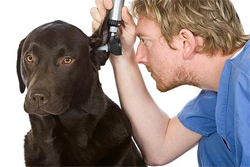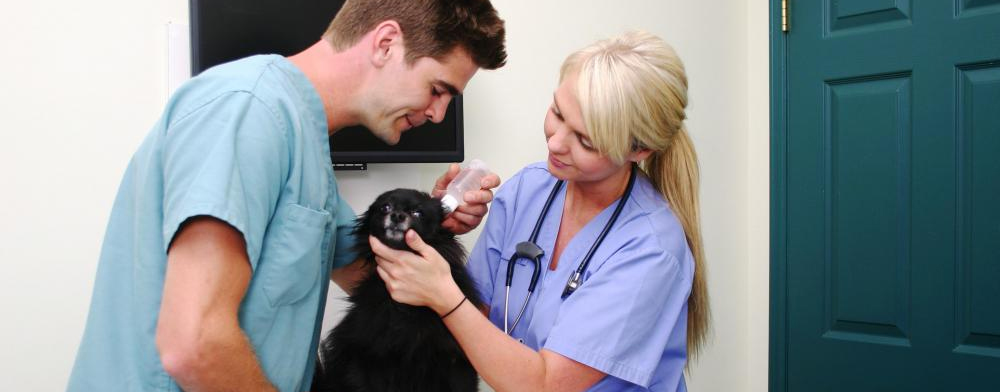Talking To Your Vet About Feline Ear Medications
Before attempting to clean or medicate your cat’s ears, get prepared with everything you will need. Once you begin with the liquids, things can get messy fast, and you will probably have an agitated cat, so grabbing something you’ve forgotten will not likely be possible.
Not many cats like being held down, and they like having things put into their ears even less. The best plan is to have someone there to help hold the cat while you concentrate on the medication. If you have to do it solo, you will need a method of holding him down and putting the medication in at once. By laying your arm across his body and spreading the ear open with one arm, you can put the medication in using the other hand.
Ear Anatomy
The outer ear consists of the flap or pinnae. This funnels goes into the ear canal, which is long and narrow. The outer ear canal has a thin flap called the eardrum or tympanic membrane, which separates it from the middle ear. Disease or trauma can easily damage the ear drum. The middle ear houses three tiny bones, the bulla, and the Eustachian tube. The inner ear is where the balance and hearing centers are. It connects with the brain and has many nerves.
Ear Problems
If a cat has a problem that causes a lot of itching, it could result in hair loss and tears in the delicate tissue of the ear. Moreover, ears should normally be pink in color but can quickly turn black with wax if ear mites are present. Here are some indicators of an ear infection:
- Redness
- Discharge
- Foul odor
- Head shaking
- Disorientation
- Ear scratching
- Rubbing ears against cupboards, floor, or other objects
All animals have fur inside of their ears but the more fur present, the less airflow. This is bad because circulation of air reduces many ear infections and diseases. If your cat has an excess of hair, you can pluck it from the inside of the ear flap with tweezers or a hemostat.
Cleaning Solutions

There are many types of cleaning solutions for your pet’s ears. The best ones have drying agents in them and help to eliminate dampness from his ears. This is beneficial because ears are breeding grounds for bacteria. They are dark and moist, the perfect place to infest and multiply. By keeping your cat’s ears dry, you are keeping bacteria at bay.
When you place the drops into his ears, be sure to hold them closed and gently massage the liquid down into the direction of the ear canal. The better you rub, the more of the liquid will be absorbed and the less will spray out when you let go of your cat and he shakes and rubs his head on everything.






